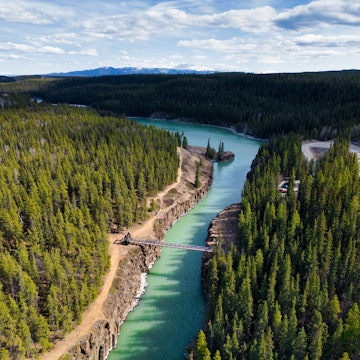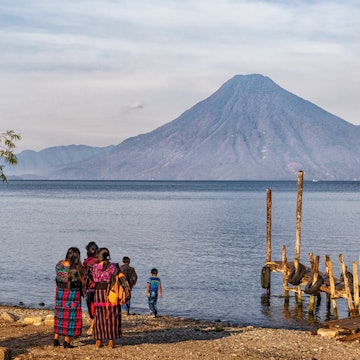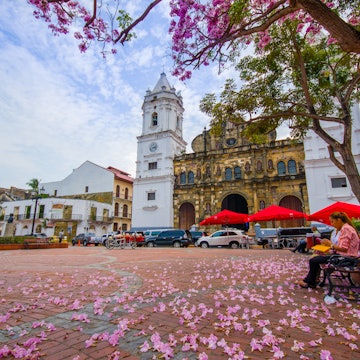
Panama's best islands: our guide to finding a piece of paradise

Apr 19, 2022 • 13 min read

Panama's over 1000 islands highlight the inhabited regions of the country © Stefan Neumann / Shutterstock
Legions of love letters have been written to Panama. The narrowest part of the isthmus connecting North and South America, Panama may be small, but it impresses in a big way. And with more than 1000 islands floating off its tropical shores, it's easy to find your own piece of paradise.
Blindingly beautiful and biodiverse, Panama's islands promise desert island adventures along two lush coastlines, facing the Pacific Ocean and the Caribbean Sea. With so many palm-fringed islands to choose from, beach lovers are wonderfully spoiled for choice, so where do you begin?
In this first-timer’s guide to Panama’s islands, we’ll show you the best islands for snorkeling, diving and basking, with advice on reaching your chosen island and tips on the spots where tourists are scarce.

When to visit Panama's islands
There's really no bad time to come to Panama. If you like pina coladas and getting caught in the rain, visit Panama's islands during the wet season between May and December. This is the most affordable and quietest time to visit, and while showers are common and sometimes heavy, it doesn't rain all day every day, so you can still enjoy the sand.
In November, locals flee Panama City for the coasts, so you might experience higher prices and more foot traffic on the beach at this time.
The dry season (January to April) is hot, humid and ideal for outdoor adventures of any intensity, from hammock-swinging to high-octane hikes through lush island-top jungles. Expect more tourists and higher prices at this time. Whether you come in the wet season or the dry, the weather remains blissfully warm on Panama's islands.
Panama lies outside of the hurricane belt so there’s no travel period to avoid. If you would like to join the revelry during some of the liveliest national celebrations, visit during Carnaval in February or March, or come in November during Fiestas Patrias, when Panama celebrates its two independence days.
November 3 is the anniversary of independence from Colombia and November 28 commemorates Panama’s liberation from Spain, and both see plenty of pageantry and festivities.
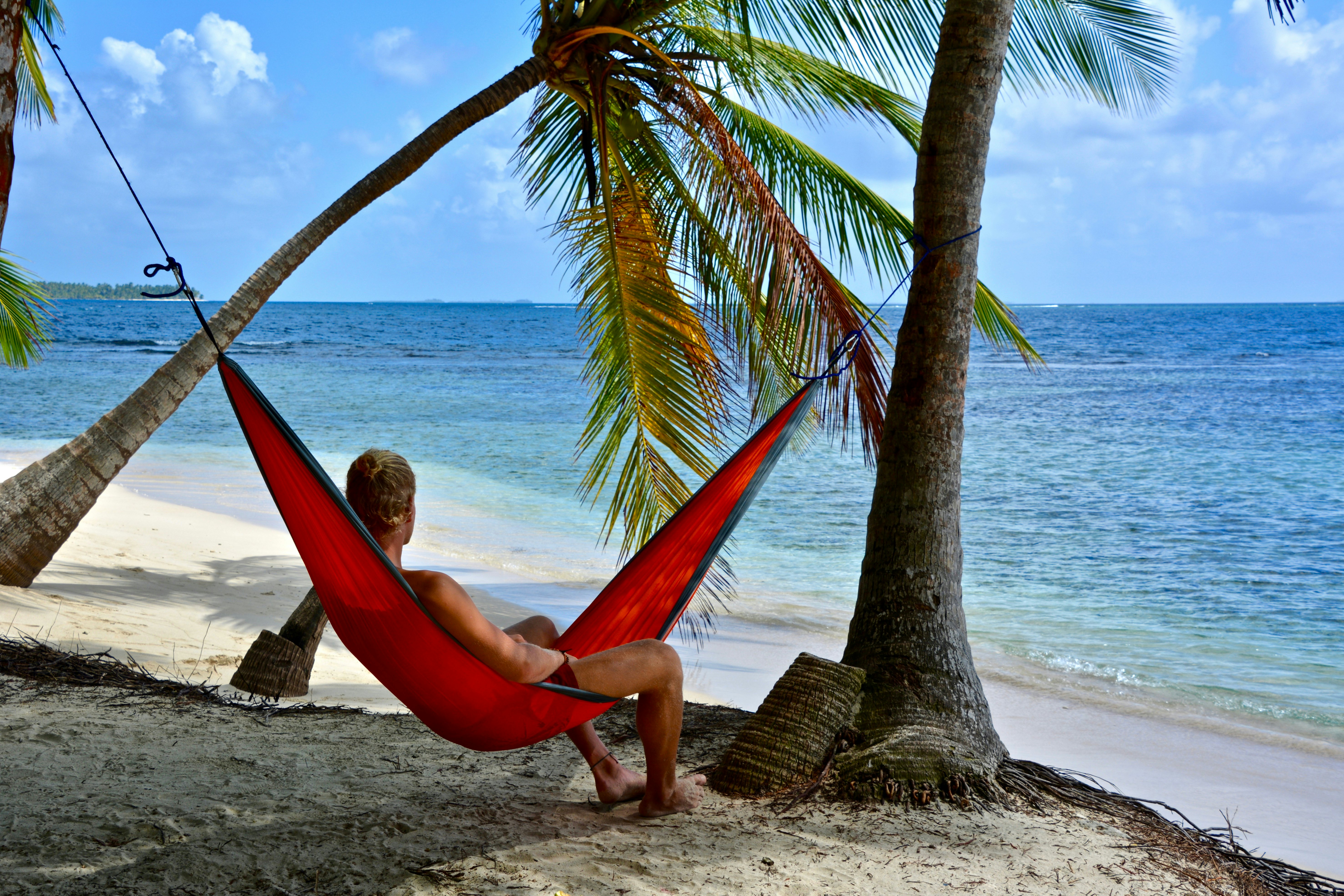
The San Blas Islands have an island for every day of the year
Officially known as Guna Yala, the San Blas Islands are the supermodels of Panama’s many tropical archipelagos. The sea is gin-clear and can be seen wherever you turn in this group of 365 tiny islands – one for every day of the year.
The archipelago is a self-governing province inhabited by the Guna people, the indigenous inhabitants of this stretch of the Central American coast. Mass tourism is kept at bay, so you’ll have plenty of beaches all to yourself with just swaying palms for company. While the pared-back lodgings, intermittent electricity, lack of wi-fi and saltwater showers might not be for everyone, the beaches here are genuinely unbelievable.
The best things to do on the San Blas Islands
Divers take note – the San Blas Islands do not permit scuba diving, though there's good snorkeling off many of the islands. You'll spend much of your time swimming, playing beach volleyball, reconnecting with nature, and letting the sound of the sea lull you to sleep in a hammock during the day. Accommodation is provided in basic cabañas (beach cabins) in Guna villages on the larger islands.
If you book your trip through a tour operator in Panama City (these are a dime a dozen), you can savor the full variety of the archipelago, with day visits to multiple islands as part of your package. Isla Perro (Dog Island) is a popular snorkeling stop, with colorful marine life that congregates around a sunken ship.
How do I get to the San Blas Islands?
Getting to Guna Yala involves a two-hour 4WD journey along winding roads from Panama City to Cartí, San Blas’ main port. From here, you'll continue by boat to your designated island. It is possible to make the journey independently and arrange boat transport to the islands from Cartí, but it’s much easier to book via a tour company as they can pick you up from your lodgings in Panama City and drop you back again at the end of the trip.
Tour operators handle all the travel arrangements, including transportation (dizzying drive included), accommodations, meals and inter-island tours and activities. When it comes to choosing an operator, San Blas Dreams, Cacique Cruiser, Guna Yala Explorer and San Blas Adventures are all worth a look in.
Buying drinking water on the islands isn’t cheap, so be sure to bring supplies (or a water filter) with you. You will pay a minimum of US$100 per day regardless of which company you book through. Trips to these flawless islands are a safer bet during the dry season, though this is also likely to be busier and pricier.

Isla Taboga is the best island for an easy day trip from Panama City
Nicknamed “the Island of Flowers,” Isla Taboga is one of the easiest islands to visit from Panama City – just 30 minutes from the capital by ferry. Historically, this bougainvillea-bedecked island has been home to pirates, Spanish conquistadors, impressionist painters, French workers on the Panama Canal, the US military and now, urban escapees seeking a break from the city fuss.
The best things to do in Isla Taboga
On a day trip from Panama City, the most rewarding activity is the hike to Taboga’s highest point, for striking views of the capital's distant silhouette. Afterward, relax on Playa Restinga, the most popular beach on the island – recognizable for the tiny sandbar connecting it to Isla El Morro, which has some colonial-era relics.
Spend your day on Taboga sunbathing, swimming, enjoying sea breezes, lounging with a cool drink or picnicking under a beach umbrella, but don't linger too late – the last ferry back to Panama City leaves in the afternoon.
How do I get to Isla Taboga?
To find the Taboga Island ferry terminal, head to Panama City’s Calzada de Amador, a picturesque boardwalk made with rocks from the Panama Canal. This is also an extremely popular spot for a sunset bike ride, which you may still have time for at the end of your island trip.
You’ll need your passport or photo identification to board, and the short trip costs US$12 one way for tourists or US$24 for a round trip. If you're day-tripping, it’s best to depart as early as possible as the last ferry back to Panama City leaves Taboga at 4pm on weekdays and an hour later on weekends and holidays.
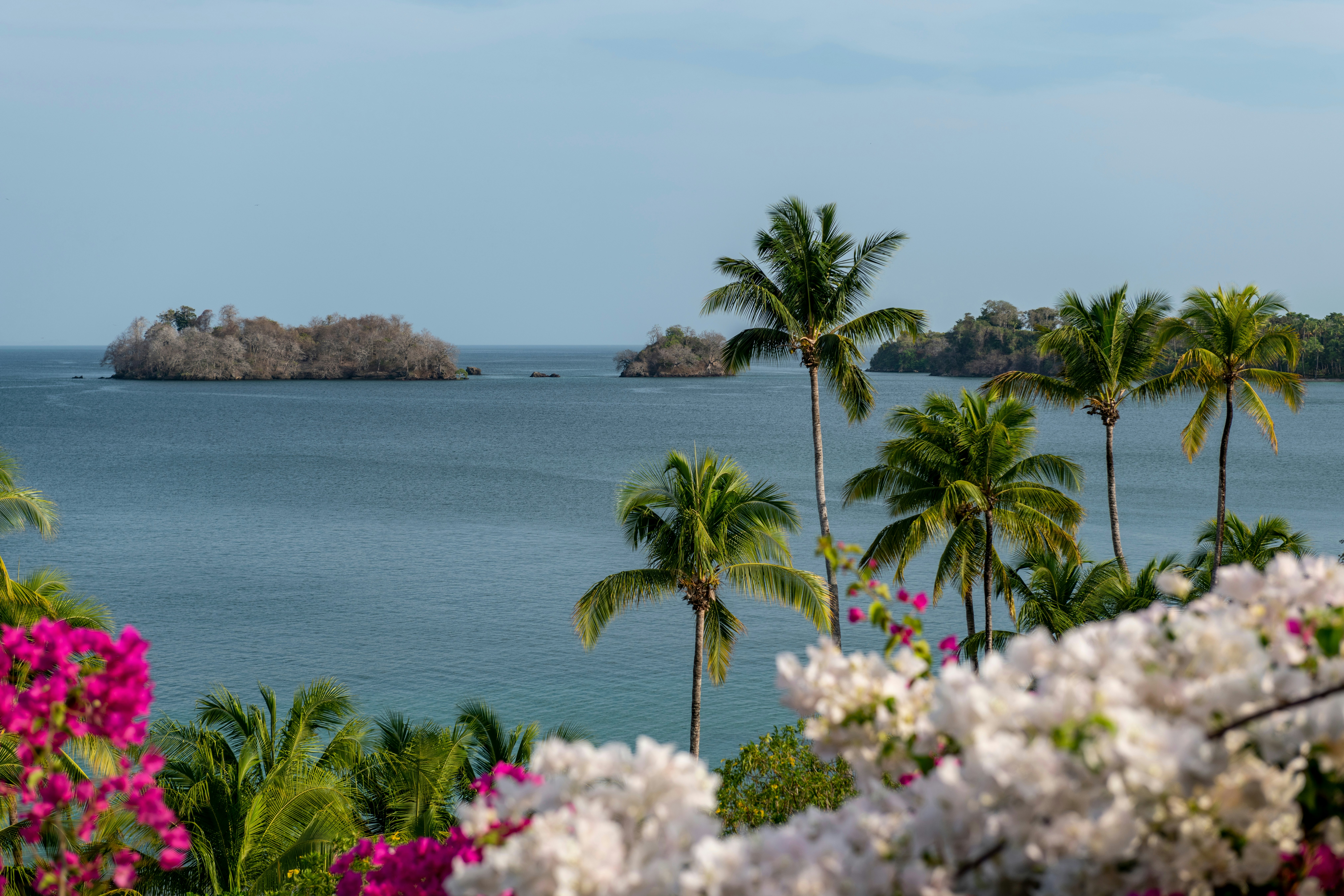
The coconut-strewn Pearl Islands are a vision of perfection
There’s a coconut-strewn beach with your name on it in the Pearl Islands (Archipiélago de las Perlas), a cluster of some 200 islands about 80km (50 miles) southeast of Panama City. The islands were named for the bounty of pearls found there – many are unnamed, and most are uninhabited, so this is the real desert island deal.
Isla del Rey is the largest island, but smaller Isla Contadora is the most developed and popular island for visitors. Contadora is Spanish for book-keeper and this is where the Conquistadors reportedly took inventory of their looted treasures before carting it all off to Spain.
These elegant islands enjoyed a glittering past as a home to the rich and famous. During its heyday, the likes of Elizabeth Taylor, Christian Dior and John Wayne visited and partied here. It’s not the worst place to “survive” even today, as the TV show Survivor proved when it was filmed on the islands in 2003.
The best things to do in the Pearl Islands
On Isla Contadora, there are over a dozen beaches and plenty of high-end places to eat, play and stay – Villa Condesa Del Mar, La Romantica and 4 Elements are all good choices – but there are no cars, so visitors and locals whiz around in golf carts.
Activities abound. You can learn to sail, peek at the marine life below the surface on snorkeling or dive trips, or spot whales offshore during mating season from July to October. As well as the beaches on lovely Isla Contradora, Isla Viveros and Isla Saboga are popular for catching a few golden rays. The latter is also a prime location for jungle hikes, windsurfing and traipsing along near-deserted beaches.
How do I get to the Pearl Islands?
Coming from Panama City, you can get a ferry to Isla Contadora or Isla Saboga from the Amador Causeway with Sea Las Perlas; the trip takes around 90 minutes, ferries run daily, and return tickets cost just under US$100. Bring identification and make sure you wake up bright and early for the sunrise boarding time.
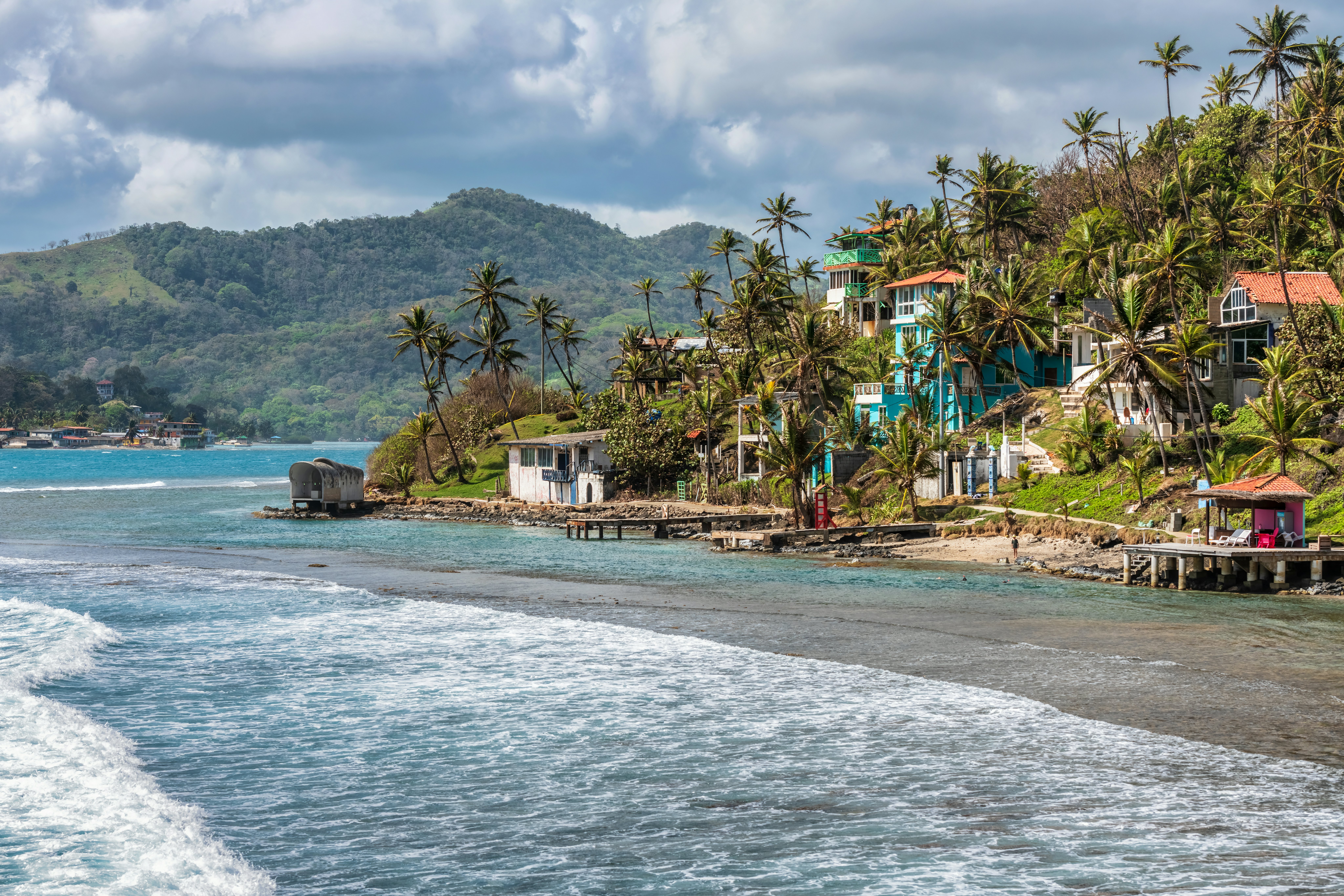
Isla Grande is a vibrant hub for Afro-Caribbean culture
There’s a mysterious statue of a Black Jesus Christ, standing in the sea on the shore of Isla Grande on Panama's Caribbean coast. The statue has been a landmark for more than 360 years and it's a testament to the rich Afro-Caribbean culture on this laid-back tropical island, which is known for its peaceful vibe and low-key beaches.
The best things to do in Isla Grande
Isla Grande is the setting for one of the oldest lighthouses in Latin America – El Faro, constructed in 1894. The hike out here offers panoramic views across the island. There are no roads, just footpaths, and crystalline beaches such as Playa La Punta make up the rest of the island.
Isla Grande lies off the north coast in the province of Colón, and it can be used as a base for explorations further afield to the historic port of Portobelo, the mangrove archway known as the "Tunnel of Love” and uninhabited Isla Mamey – a popular weekend getaway for Panamanians.
How do I get to Isla Grande?
Isla Grande is about two hours from Panama City – first travel to La Guairá by bus or car, then take a short boat trip to Isla Grande from the jetty. If you’re coming by bus from the capital, head to Albrook bus station and take a bus towards Sabanitas, where you can change for a La Guairá bus. You can also take a bus from Sabanitas to Portobelo and then a taxi on to La Guairá.
Once on Isla Grande, infrastructure is limited. There are several places to stay and eat but no ATMs so bring enough cash for the duration of your stay. One of the most exciting times to visit the region is during the Festival of the Black Christ on October 21, when thousands of pilgrims arrive to pay their respects to the revered El Naza statue.

The islands of the Golfo de Chiriquí offer a chance to get away from it all
Stargazing is the order of the day on the unspoiled and hugely underrated islands of Parque Nacional Marino Golfo de Chiriquí, offshore from the city of David in the Golfo de Chiriquí. This lush national park has more than two dozen pristine islands covered by some of the densest mangrove forests in Central America interspersed with isolated beaches.
You’ll never have to wrestle for a sandy spot as the islands are largely uninhabited with only a handful of places to stay, including Cala Mia, Islas Secas and Isla Palenque – an award-winning eco-lodge. Further east along the coast is Parque Nacional Coiba, a legendary destination for snorkeling and diving, accessible from the relaxed surf resort of Santa Catalina.
The best things to do in the Gulf of Chiriquí
If you're after beaches, the islands of Isla Bolaños, Isla Parida and Boca Brava all have white sands that are well worth a few hours of your time. For magnificent snorkeling and diving, Parque Nacional Coiba includes the largest island in Panama and its fringing reefs, and it's one of the best diving spots in the country.
Coiba was a penal colony housing criminals and enemies of the state for almost 100 years, which kept the island safe from developers. Today, nature lovers can appreciate its immense biodiversity above and below the water, with opportunities to spot rare endemic subspecies such as the Coiba howler monkey. Diving, snorkeling, and wildlife-spotting trips are easy to arrange in Santa Catalina.
The Gulf of Chiriquí is also one of the few spots in the world where northern and southern hemisphere humpback whales migrate to give birth and raise their young, making this one of the top places to be during Panama’s whale-watching season from July to October.
How do I get to the Gulf of Chiriquí?
Trips to this off-the-radar paradise start in the town of Boca Chica, a six-hour drive from Panama City. Alternatively, you can fly from the capital to the city of David and then travel to Boca Chica in around two hours by car (or by bus and minivan, changing at the turnoff to Horconcitos).
If you’re heading directly to Coiba, the fastest route is from the surf village of Santa Catalina where you can pick up the required park permit and arrange a boat trip.

Bocas del Toro is Panama's most accessible island escape
There’s one big reason to visit the nine islands of the Bocas del Toro archipelago – variety. Island hopping is the order of the day in Bocas and there are islands and beaches here to satisfy every inclination. You’ll find backpackers, honeymooners, retirees and everyone in-between, being ferried between the islands on old-fashioned lanchas (motorized wooden boats).
The best things to do in Bocas del Toro
Isla Cólon is the beating heart of Bocas, with the widest selection of hotels, stores, restaurants and the liveliest nightlife. Don’t miss paradisiacal Starfish Beach (Playa Estrella) where the glass-clear waters are perfect for snorkeling and the sands are perfect for letting life slow to a crawl. Over on the east shore, long and lovely Playa Bluff attracts surfers from all over the world.
Across from Isla Cólon is Isla Carenero, which got its name from days when ships were hauled onto the beach and turned on their sides, or “careened," for repairs and maintenance. If you feel hungry, stop by Bibi’s on the Beach for a seafood-centric menu, the best pina coladas this side of the Caribbean, and the chance to spot manta rays leaping while you dine al fresco.
For jungle beaches, bat caves and thrilling surf breaks, decamp to Isla Bastimentos, the archipelago’s largest island. Over-water bungalows are the pinnacle of the tropical experience, so seek them out at the Azul Paradise Resort for castaway privacy and barefoot luxury on an idyllic, private beach. Red Frog Beach (which is named after the tiny strawberry poison dart frogs that reside there) also deserves special mention.

Nearby in Parque Nacional Marino Isla Bastimentos, the Cayos Zapatillas are two pocket-sized, uninhabited islets – the most remote islands in the Bocas cluster – and each cay is tiny enough to circumnavigate in under an hour. Zapatillas means shoes in Spanish, and from above, the cays do indeed resemble a pair of shoes walking in the ocean towards neighboring Bastimentos. Locals insist that God left these prints as he descended from heaven.
How do I get to Bocas del Toro?
You can fly to the town of Bocas del Toro on Isla Cólon from Panama City’s Albrook "Marcos A. Gelabert" International Airport with Air Panama; expect to pay around US$110 for the scenic 50-minute one-way flight.
For a more economical (but less comfortable) route to the islands, you can travel by bus from Panama City to Almirante – a journey of around 10 hours – and then continue to Bocas del Toro by water taxi (30 minutes).
A good time to travel to Bocas del Toro is during the Bocas Invitational surf competition in February, or in September for diving, dancing, music, food and crafts during the Feria del Mar festival. If you don't see everything, don't stress – visitors to Bocas almost always return (in fact, some never leave in the first place).
You may also like:
The 10 best beaches in Panama for big swells and secluded escapes
The best time to go to Panama
Toes in sand, drink in hand: a guide to Panama’s islands











